He was eight years old.
It was the first time Lee Stanton’s mother took him antiquing. “I was the only child at home at the time, so in order to maintain my interest while we were shopping, she got me started on collecting too,” he recalls. He began with vintage toys, then tramp art. “As my taste would mature, she would quickly shift my attention to another collection,” Stanton adds. When his mother was busy, he’d spend time with his grandfather, a woodworker who restored old furniture. Later, he started joining his older sister, an interior designer, on her regular buying trips to Europe.
It seems almost inevitable, then, that Stanton would end up an antiques dealer himself-albeit as a second act, after a successful career in publishing. “It was kind of something I inherited,” he explains from his weekend retreat in Montecito, California, about an hour and a half from his home in Los Angeles. Built in the 1940s as an artisans’ compound, the sprawling property is itself rooted in history, making it the ideal backdrop for the current iteration of Stanton’s ever-changing collection.
Originally comprising four Spanish-style adobe casitas that shared a communal kitchen (and a communal pay phone), the home was in disrepair when Stanton and his partner, Israel Serna, bought it four years ago. One of the structures had been lost to a fire, two were haphazardly combined in the ’60s to form a single home, and one was an art studio. “It had been really neglected,” Stanton says. “Before I started fixing it up, I brought a big-name designer friend from L.A. to see it. When I mentioned that I didn’t want to rob it of its quirky energy, she told me, ‘Oh, honey, you don’t have to worry about losing any funk in this house!’” he notes with a laugh.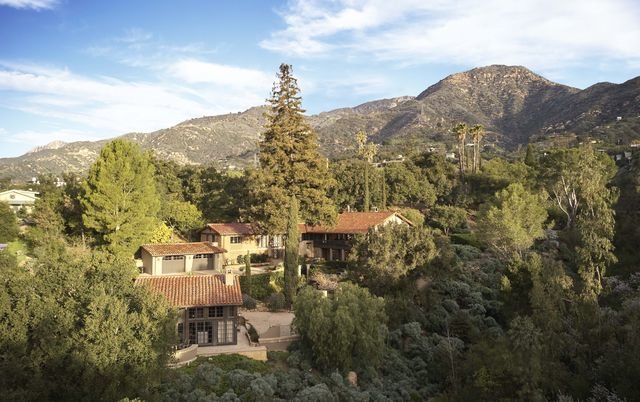
Over the course of a year and a half, he restored the structure, pulling from both the house’s lore (handmade tiles pay homage to the ceramicists who once lived there) and his own (a restaurant in Japan where he spent a memorable evening inspired the design of the kitchen island). Once complete, he filled the rooms with a carefully edited array of furniture (mostly 19th-century European) and art (a trio of collages made from his haberdasher grandfather’s fabrics).
“I’ve come to relish the process of taking something old and making it feel new while still preserving its integrity,” Stanton says. “Antiques tell a story, and so does this house.”
Living Room
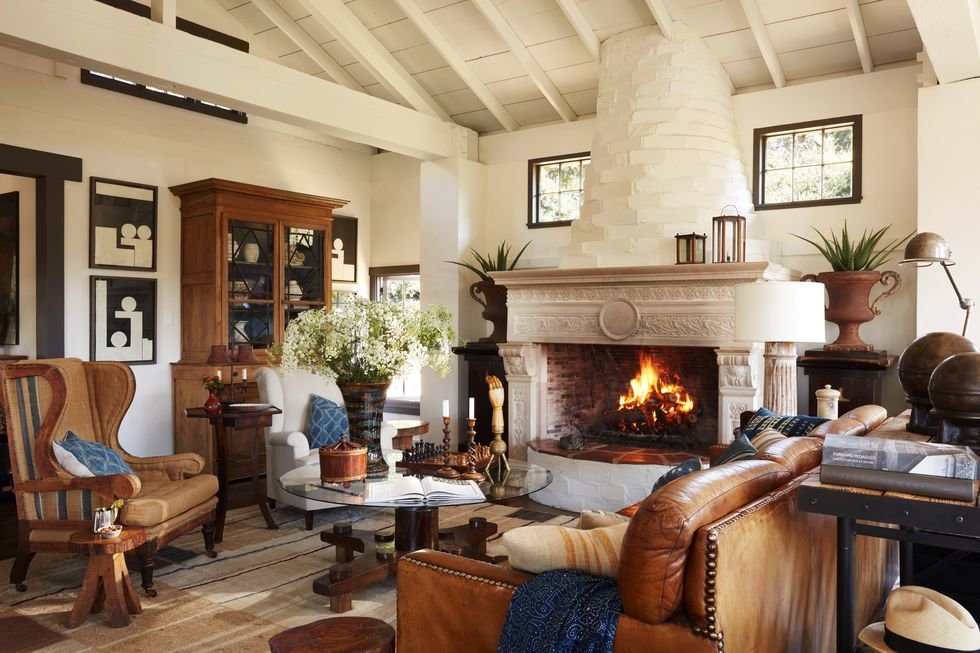
Stanton incorporated salvaged architectural elements-like this fireplace from a historic estate in central California-throughout the house. Furniture: Lee Stanton Antiques. Rug: Woven.
Kitchen

The ceiling fixture was constructed from antique mechanical parts. Counters: honed granite through Stone Source (island) and Cambriaquartz (surrounding). Sink: Kohler, with an Axor faucet. Furniture and art: Lee Stanton Antiques.
Dining Area
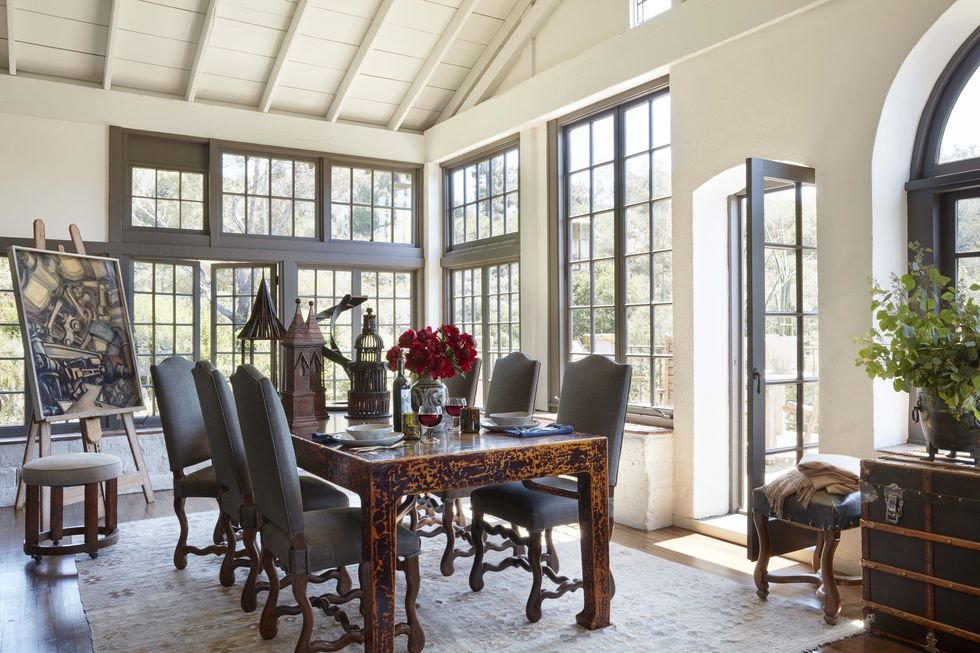
A collection of antique architectural models sits atop the 19th-century dining table. Rug: Woven. Furniture: Lee Stanton Antiques.
Gallery

A hallway connects what was formerly two separate casitas on the property. Applying stain to the original terra-cotta tile flooring added extra character. Furniture: Lee Stanton Antiques.
Main Bedroom

Handwoven linens from Pat McGann Gallery and textile art by Daniel Pontius fill the bedroom, which is painted in a limewash from Sydney Harbour Paint Company. Furniture: Lee Stanton Antiques. Rugs Woven. Picture light: RH.
Sitting room
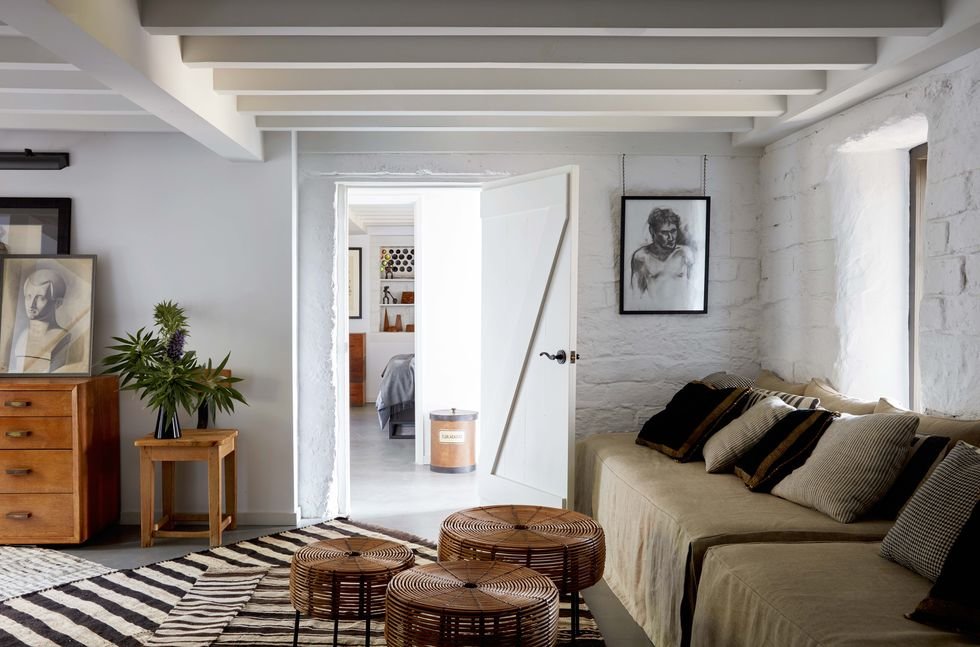
A pair of twin beds double as seating for visiting guests; the vintage pillow fabric was repurposed from early-20th-century British soldiers’ uniforms. Furniture: Lee Stanton Antiques. Rugs: Woven.
Dining Terrace
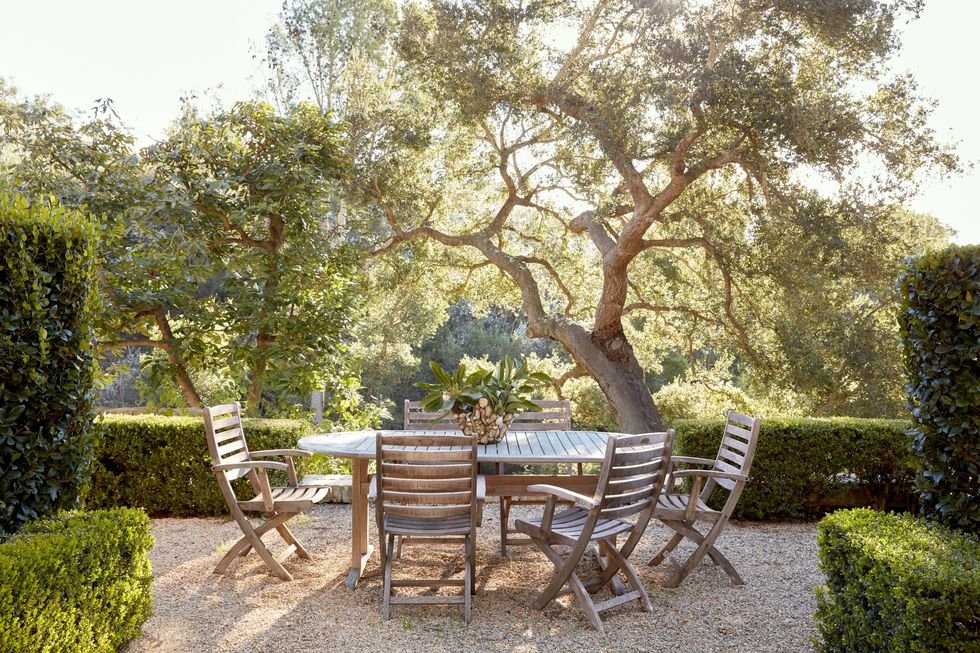
“I wanted to maintain the humble and eclectic nature that evolved on the property,” says Stanton, who frequently hosts guests with his partner, Israel Serna. Furniture: Lee Stanton Antiques.
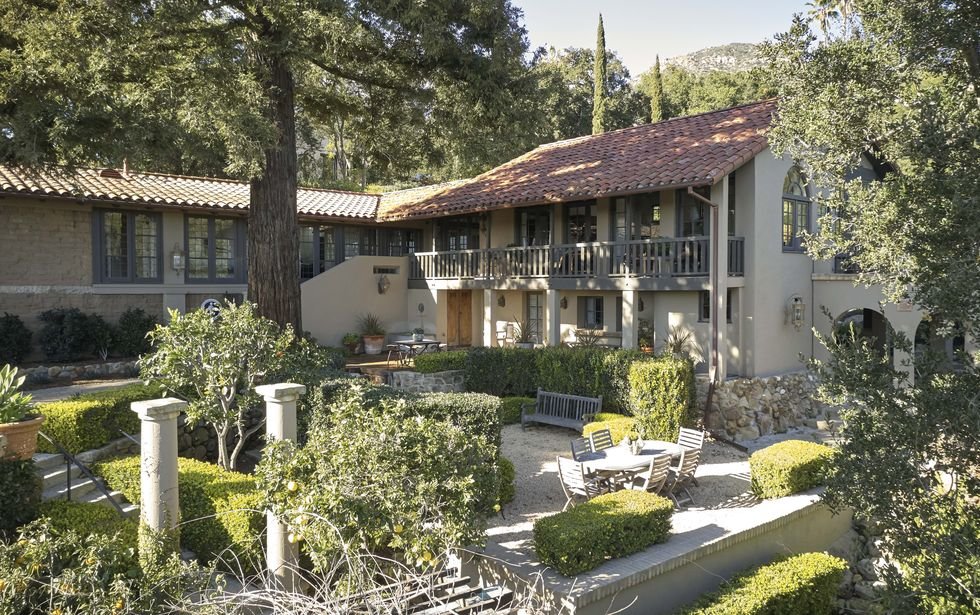



![A Tranquil Jungle House That Incorporates Japanese Ethos [Video]](https://asean2.ainewslabs.com/images/22/08/b-2ennetkmmnn_t.jpg)









